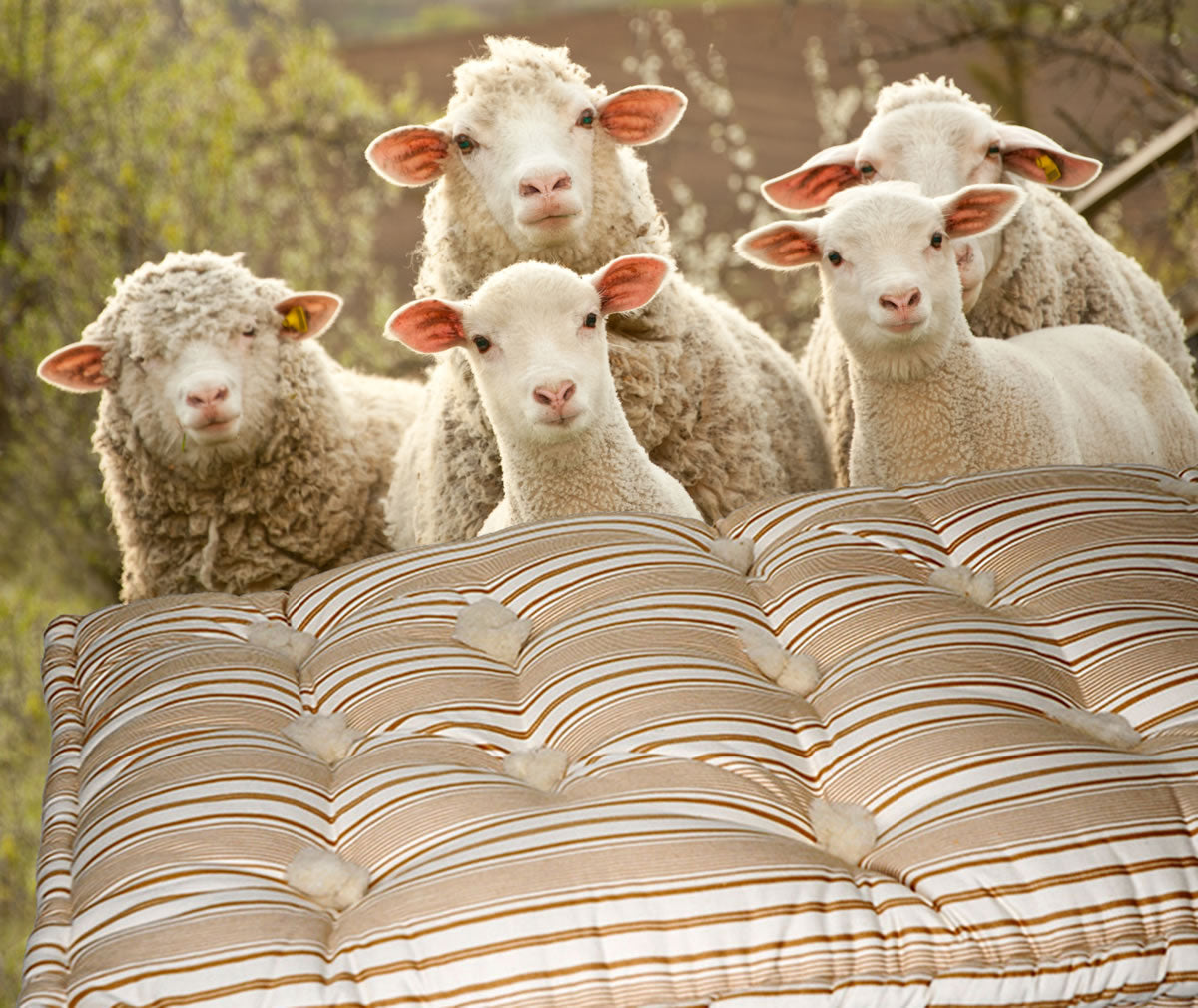The wool of our sleep: a tradition I will never abandon

In the large courtyard of our family home, we used to wash sheep's wool from mattresses and pillows. It was an ancient ritual that marked the passing of the seasons, involving the women of the family and lasting several days—days filled with careful and loving work.
The process began with washing the wool entirely by hand. No machines: just strong arms, patience, and the scent of pure water and lanolin in the air. The wool was soaked and rubbed in large basins, then lifted, heavy and dripping, and hung on long lines to drain. Once the excess water was drained, we spread it out on large white sheets spread out on tables. During the day, we turned it regularly in the sun to ensure even drying. In the evening, we carefully collected it and brought it indoors, wrapped in the same white sheets to protect it from humidity and dew.

While the wool was drying, we washed the cotton mattress covers separately: thick, sturdy covers that had held years of sleep and dreams. These, too, were hung to dry in the summer breeze.
Once the wool was dry, the next step was to "open" it. This meant pulling it by hand to fluff it and make it soft again. It was a delicate task, an act of regeneration. As we worked, we found tiny bits of dry grass or prickly burrs still trapped in the fibers: remnants of the sheep's wanderings through fields and meadows. Even after years of careful cleaning, these small traces resurfaced, as if nature had hidden memories in the wool.

wooden tool for carding wool
The final part of the ritual was the visit to the mattress maker, the traditional mattress maker. I remember her vividly: a very old, very thin woman, always dressed in black. She carried a wooden tool for carding wool. After carding, using her long needles and strong hands, she gave new life to our mattresses. With expert skill, she stuffed the mattresses, sewed them, and reshaped them until they were full and perfect again.

Sleeping on a wool mattress is a unique experience. You feel a unique sensation of comfort that only those who have tried it can understand: warm in the winter, cool in the summer. I would never trade my wool mattresses and pillows, precious family heirlooms passed down from my mother and mother-in-law, for any modern synthetic alternative. I've tried others—memory foam, latex, springs—but none offer the same comfort as wool. Nothing compares to its natural, breathable softness.

For me, these mattresses are more than just a place to sleep. They are living history, embodying care, tradition, and a kind of luxury that comes not from wealth, but from time, patience, and love. They are my link to past generations and my secret to truly restful sleep.
